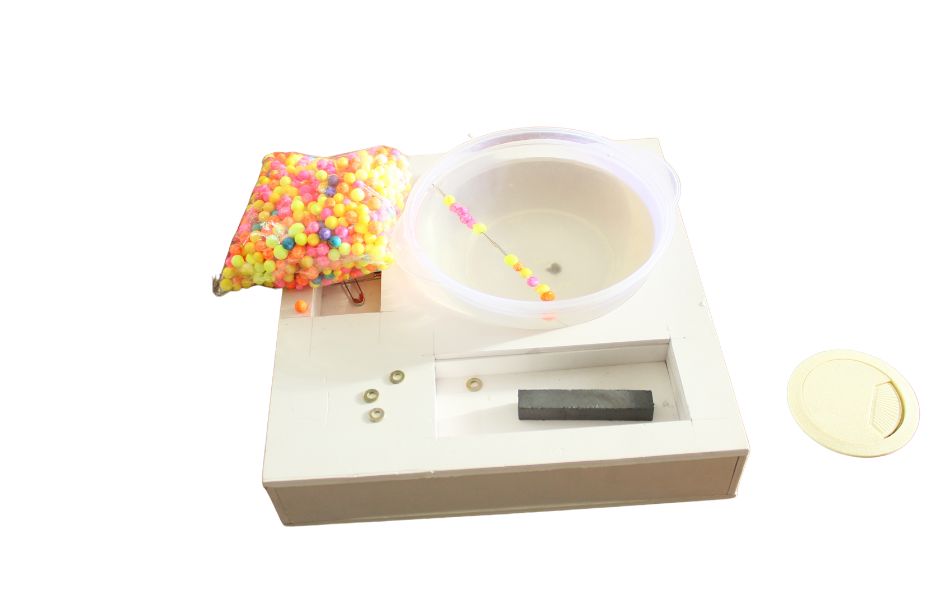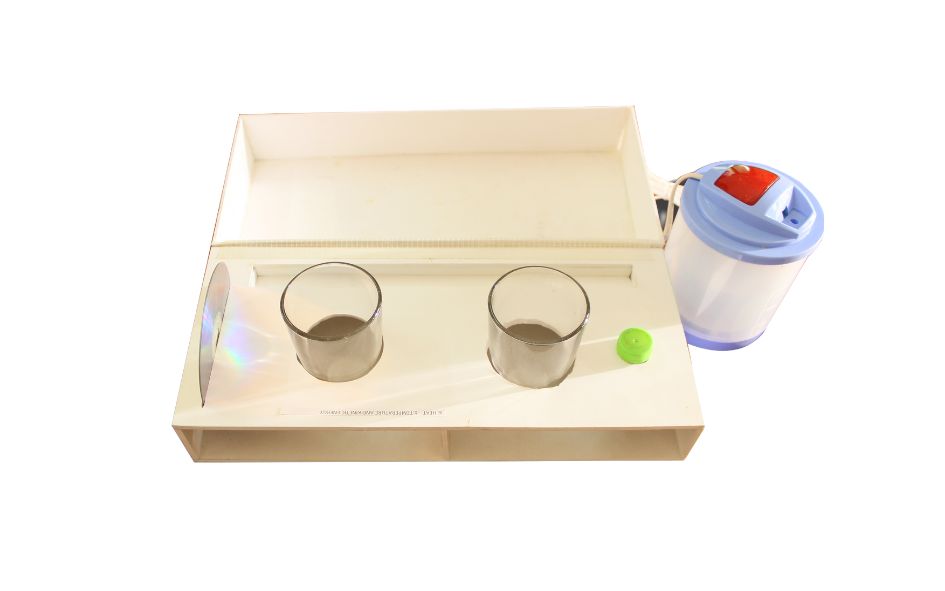

NEPHRON SYSTEM WORKING MODEL
SCIENCE LAB EQUIPMENT WORKING MODEL / SCIENCE EXHIBITION WORKING MODEL / BIOLOGY WORKING MODEL
2 in stock
Refund
Unfortunately, once an order is placed, there is no refund available. However, we do offer exchanges for defective or damaged items.
Due to the nature of our products and the potential for misuse or mishandling, we do not offer refunds. We believe in customer satisfaction and strive to provide quality exchanges for any issues that may arise.
If you have received a defective or damaged item, please contact our customer service team and they will assist you with the exchange process. Please note that exchanges are subject to availability and product conditions.
We do not offer refunds for change of mind purchases, but we do offer exchanges for valid reasons such as defects or damages.
Delivery
My Science Kart delivers orders through a reliable and efficient shipping service to ensure your products arrive safely and on time.
Yes, you can easily track your order from My Science Kart by using the tracking number provided to you once your order has been shipped.
If you have any issues with your order from My Science Kart, please contact our customer service team who will be happy to assist you and resolve any problems.
Payment
You can pay for your purchases on My Science Kart using various payment methods such as credit/debit cards, net banking, UPI’s and mobile wallets.
Yes, we use industry-standard encryption technology to protect your payment information and ensure that it is secure.
If you have any payment-related queries or issues on My Science Kart, you can contact our customer support team through the website or email us at support@mysciencekart.com.
NEPHRON SYSTEM WORKING MODEL
The human nephron system, also known as the renal system, is responsible for filtering blood, removing waste products and excess substances, and maintaining fluid and electrolyte balance in the body. The nephron is the functional unit of the kidney and consists of various structures that work together to perform these functions. Here’s how the human nephron system works:
**1. Filtration:**
– Filtration occurs in the glomerulus, a network of capillaries enclosed within the Bowman’s capsule, which is the beginning of the nephron.
– Blood enters the glomerulus through the afferent arteriole and is filtered under pressure, allowing water, electrolytes, glucose, and waste products such as urea and creatinine to pass into the Bowman’s capsule, forming filtrate.
**2. Reabsorption:**
– As the filtrate moves through the renal tubules, most of the water, electrolytes, and essential nutrients are reabsorbed back into the bloodstream.
– Reabsorption primarily occurs in the proximal convoluted tubule (PCT), loop of Henle, distal convoluted tubule (DCT), and collecting ducts.
– Specialized transport mechanisms in the tubular cells regulate the reabsorption of sodium, chloride, potassium, bicarbonate, glucose, and amino acids, maintaining proper electrolyte balance and blood pH.
**3. Secretion:**
– Secretion involves the transfer of certain substances from the blood into the renal tubules for excretion.
– Active secretion occurs mainly in the PCT and DCT, where hydrogen ions, potassium ions, creatinine, and drugs are actively transported from the blood into the tubular fluid.
– Secretion helps eliminate waste products and maintain electrolyte balance and pH regulation in the body.
**4. Concentration and Dilution:**
– The loop of Henle plays a crucial role in concentrating urine by creating a concentration gradient in the renal medulla.
– As filtrate moves through the descending limb of the loop of Henle, water is reabsorbed passively, concentrating the tubular fluid.
– In the ascending limb, sodium and chloride ions are actively transported out of the tubule, creating a hypertonic medullary interstitium that promotes water reabsorption in the collecting ducts.
**5. Formation of Urine:**
– The final product of nephron processing is urine, which consists of water, electrolytes, urea, and other waste products.
– Urine formed in the nephrons drains into the collecting ducts, where further adjustments to water and electrolyte balance occur.
– Urine is then transported to the renal pelvis, ureter, bladder, and finally excreted from the body through the urethra during urination.
**6. Regulation of Blood Pressure and Volume:**
– The nephron system plays a critical role in regulating blood pressure and volume by adjusting the reabsorption of water and electrolytes.
– Hormones such as antidiuretic hormone (ADH), aldosterone, and atrial natriuretic peptide (ANP) help regulate water and electrolyte balance by affecting the permeability of the collecting ducts and the reabsorption of sodium and water.
In summary, the human nephron system is essential for maintaining fluid and electrolyte balance, filtering waste products from the blood, and regulating blood pressure and volume. Its intricate structure and functions ensure the proper excretion of waste and the maintenance of homeostasis in the body.
Title: NEPHRON SYSTEM WORKING
Explore Human Physiology with Precision
Dive into the intricate world of human physiology with our cutting-edge Nephron System Model. This detailed replica provides a hands-on learning experience for students, educators, and healthcare professionals interested in understanding the functional unit of the kidney—the nephron. Ideal for classroom demonstrations and personal study, this model simplifies complex concepts of renal function and disease.
Advanced Learning Tool for Medical Education
Enhance your understanding of how the human kidney processes bodily fluids and toxins with our Nephron System Model. Each component of the model is designed to represent various parts of the nephron, including the glomerulus, renal tubules, and collecting duct. This allows for a comprehensive educational experience that helps clarify the mechanisms behind filtration, reabsorption, and secretion.
Durable and Accurate Educational Resource
Our Nephron System Model is constructed from high-quality materials that ensure durability for repeated use in labs, classrooms, and medical offices. With accurate anatomical details, it serves as an excellent reference for preparing for exams, developing patient explanations, or enhancing personal knowledge about renal health and diseases.
| Weight | 1 kg |
|---|---|
| Dimensions | 50 × 40 × 6 cm |
You must be logged in to post a review.
Q & A
Related Products
ELECTRIC SHOCK WORKING MODEL
- ✓ 100% Quality products
a. NATURE OF MATERIAL AND RESISTANCE b. LENGTH OF CONDUCTOR AND RESISTANCE c. CROSS SECTION AREA AND RESISTANCE WORKING MODEL
- ✓ 100% Quality products
BASIC ELECTRIC CIRCUIT ( THREE CASES) WORKING MODEL
- ✓ 100% Quality products
HEAT, TEMPERATURE and KINETIC ENERGY WORKING MODEL
- ✓ 100% Quality products
AC ELECTRIC GENERATOR WORKING MODEL
- ✓ 100% Quality products
MULTIMETER
- ✓ 100% Quality products
SEPARATING IRON FROM THE SOIL WORKING MODEL
- ✓ 100% Quality products
MAGNETIC FIELD DUE TO STRAIGHT WIRE CARRYING CURRENT WORKING MODEL
- ✓ 100% Quality products
Product categories
- Circuits & Projects 233
- My Science Kart 665
- Raw Materials For Projects & Lab Equipments 381
- Science Exhibition 516
- Science Exhibition Projects & Working Models 344
- Biology Science Exhibition Projects & Working Models 31
- Chemistry Science Exhibition Projects & Working Models 12
- Mathematics Science Exhibition projects & Working Models 7
- Physics Science Exhibition Projects & Working Models 129
- Robotics Science Exhibition Projects & Working Models 23
- Social Science Exhibition Projects & Working Models 20
- Science Lab Equipments With Working Models 363
Cart
TRULY INDIAN EDUCATION BRAND
Over 10,000+ Happy Customers
My Science Kart
Address:- Ground floor, Lakshmi Nagar, D.No:- 40-1/1-5, PVP Mall Backside, Mogalrajapuram, Labbipet, Vijayawada, Andhra Pradesh 520010
7673977997, 0866-3543677
mysciencekart@gmail.com
Categories
MAP
© My Science Kart 2024, Designed & Developed By Synfocy Tech Solutions






















Reviews
There are no reviews yet